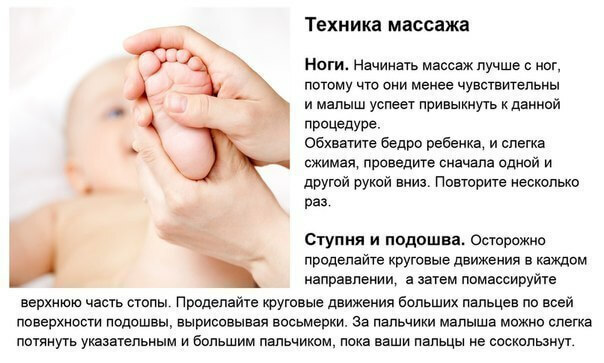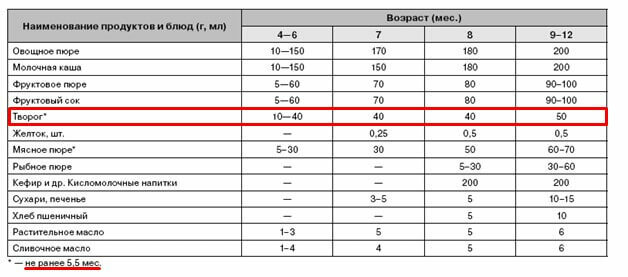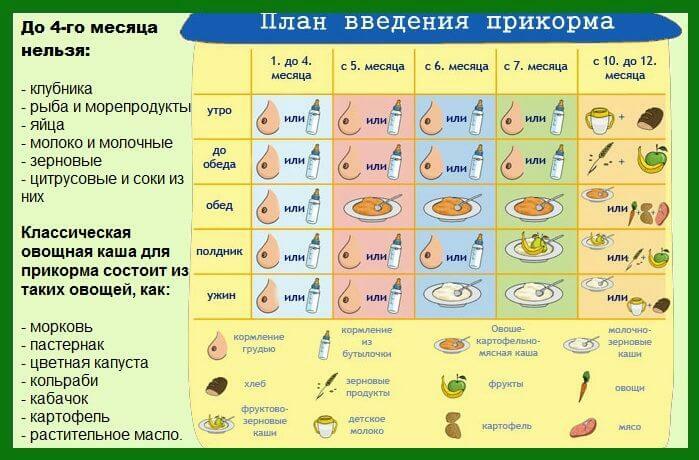Is it possible for a child to have milk?
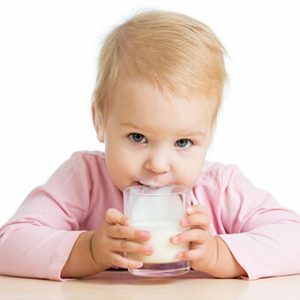
After the birth, a child who spent 9 months in the womb of the mother, is in new and unusual conditions.The first and only food for at least 6 months for him will be mother's milk. Breastfeeding is one of the main factors for the successful and rapid adaptation and growth of the baby.
Mother's milk as a unique product is an ideal food that allows a child to grow up healthy and strong.There is no alternative to breast milk, as adapted milk mixtures are only close to it in composition, but not identical.In the absence of milk in a woman after childbirth, it is still preferable to mix, not natural - to cow or goat milk.
Note: is physiologically conditioned that the milk of a specific animal of a biological species is intended for feeding exactly its offspring.
In this regard, women's milk for infants up to 6-12 months is the ideal source of necessary substances.It causes proper development.Cow is allowed to enter the diet at an older age.But first things first.
Contents: Composition and properties of cow's milk Composition and properties of goat's milk 4 reasons not to give children whole cow milk to 1 year Terms of milk introduction to the children's diet How to choose milk for the baby?Composition and properties of cow milk
Milk of cattle is a polydisperse system consisting of water( 87.5%) and a number of constituents - fats, proteins, micro- and macro elements.The milk fat level in cow's milk varies between 3.5%.Milk fat is about 20 kinds of fatty acids. Compared with breast milk, the cow contains several times more refractory and saturated acids.They provoke functional disorders of the intestinal tract.
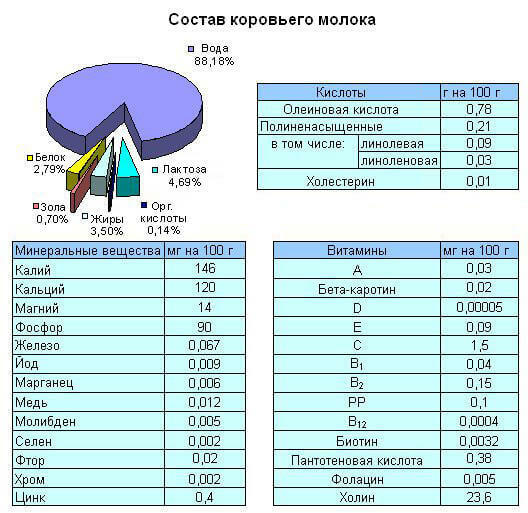
Important: the proportion of protein in cow's milk is 3.2%, it is almost 3 times more than in breast milk of a woman.Those.When using cow's milk instead of the mother's, the digestive system of the baby will work with triple load.
Moreover, these two types of milk differ in the composition of the proteins themselves, and in the content of other components.
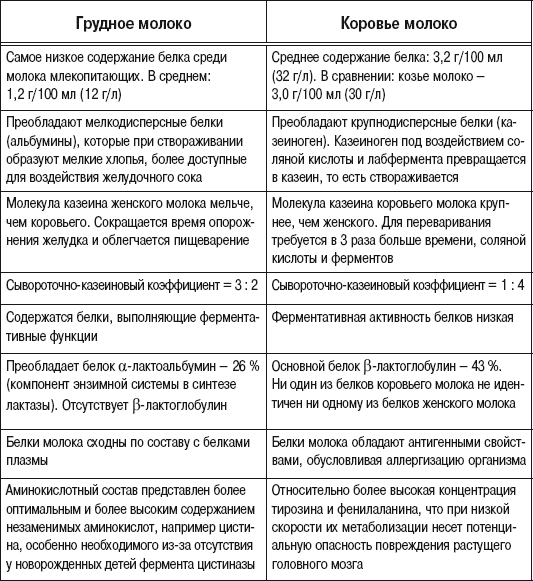
In the milk of a cow, there are no components that protect the immunity of the child.It lacks iron( and what is - is poorly digested), zinc and a number of vitamins.There is an overabundance of some microelements, which also negatively affects the health of the baby. More detailed figures can be seen in this table :

Composition and properties of goat milk
It is often possible to hear the opinion that goat's milk is more useful than cow milk, and it can be given to children almost from birth. But in fact, goat's milk is very different from the female one.
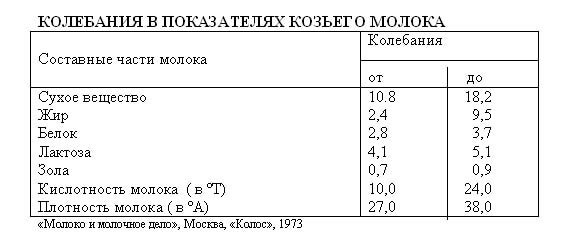
Goat's milk contains a lot of fat, and when it is used, it will actively accumulate subcutaneous fat. It contains casein and triglycerides, which are very poorly digested in the infant's immature gastrointestinal tract.
This process requires a lot of energy, so whole goat milk for the digestive system of the infant is a heavy product.
The high level of phosphorus and calcium in goat's milk has a positive effect on the development of the musculoskeletal system, contributes to the prevention of rickets, caries.But without vitamin D, calcium is almost not digested, and phosphorus is absorbed in excess.From this, first of all, the kidneys, which experience overload, suffer.For a small developing organism this is highly undesirable.In such milk, folic acid is completely absent, the lack of which can lead to the development of anemia.
Note: goat milk is allowed to enter into food no earlier than 2.5 - 3 years( at this age already fully functioning kidneys), provided that the baby does not have allergies.
4 reasons not to give whole cow milk to 1 year of age to children
- Protein .Casein of cow's milk is very aggressive on the children's intestines.As a result, the level of histamine increases, the allergy is formed, the intestinal walls are injured.
- The lack of important enzymes in the child .To make cow milk assimilated by the body, specific enzymes are needed, which the baby simply does not have, because its gastrointestinal tract does not produce them.Splitting of foreign amino acids requires unnecessary expenditure of energy, which doubles the load on immature gastrointestinal tract.As a result, diarrhea occurs.It develops most often in conditions of the child's use of cow's milk.There are no such problems when feeding with mother's milk, because it is balanced in composition, well absorbed, supplies the body with all the necessary components.
- Allergies .The danger is that it often does not appear immediately.A child can receive milk of animal origin regularly for a long time without any manifestations of allergy.An allergic reaction, as a rule, manifests itself suddenly.It is important that the protective mechanisms of the body can cope with the complications.To avoid this situation, you should give preference to sour-milk products, since it is safer.
- Risk of development of iron deficiency anemia .Breast milk contains a small amount of iron, but it is well absorbed.Cow, at times increases the risk of anemia, which is proved by clinical studies.The reason for this phenomenon is that the iron in milk of animal origin is 0.5 mg / l, and the absorption is only 10%.Mother's milk contains up to 1.0 mg / l, but the percentage of its assimilation is 50!The iron of plant origin from cow's milk is poorly assimilated because of the presence of calcium and casein in it.If a child drinks such milk constantly, then eventually ulcers form on the intestinal mucosa.This provokes bleeding, blood in the stool.As a result - anemia and other disorders in the work of many organs and systems.
Timing of the introduction of milk into the children's diet
 It is important to remember that up to 1.5-2 years the children's digestive tract is immature and it is difficult for them to digest milk proteins, calcium and phosphorus in abundance.Therefore, to enter whole milk into a baby diet is better after 12-16 months of .After a year, you can start with cereals that are cooked on the water, and at the end of the preparation add milk in a ratio of 1: 2.Dilution with water will reduce its high caloric value.In this case, it is necessary to observe the reaction of the child, his state of health after eating.This will help in time to identify signs of an allergy to milk protein and exclude it from the diet, avoiding complications and negative consequences.
It is important to remember that up to 1.5-2 years the children's digestive tract is immature and it is difficult for them to digest milk proteins, calcium and phosphorus in abundance.Therefore, to enter whole milk into a baby diet is better after 12-16 months of .After a year, you can start with cereals that are cooked on the water, and at the end of the preparation add milk in a ratio of 1: 2.Dilution with water will reduce its high caloric value.In this case, it is necessary to observe the reaction of the child, his state of health after eating.This will help in time to identify signs of an allergy to milk protein and exclude it from the diet, avoiding complications and negative consequences.
It is worth remembering that the necessary enzymes, which are responsible for the splitting of milk, in the child's body begin to be fully developed only to 3 years. Therefore, when it is impossible to breast-feed a child, preference should be given to special milk formulas.Their composition is developed taking into account the needs of toddlers of different ages and is maximally adapted for their organism.
In mixtures, the amount of phosphorus and calcium is reduced, the protein is in a partially split state( to facilitate its digestion by the children's gastrointestinal tract), the necessary vitamins, iron and other nutrients are added.
Important! If you decide to introduce milk into your baby's diet, then it should be done gradually.Begin with a 1: 2 dilution and 1 teaspoon, gradually increasing the portion of milk and reducing the amount of water.
How to choose milk for a child?
Whole milk always has a higher fat content than the one we buy in the store.Therefore, children under 3 years of age should be given it in a diluted form.
Currently, several methods of processing milk are used, in order to decontaminate it and extend the shelf life.For proper product selection, you need to know the features of these processes.
Milk criteria to be taken into consideration:
- Sterilization of .After it, no bacteria, no useful substances remain in the milk.This is justified by its prolonged heating at high temperature( up to 150 ° C).It can be stored for a long time and should not be boiled before use.
- Pasteurization of .This product is most useful for children, as it is heated for a short time up to 70 ° C.As a result, the pathogenic microflora perishes, and all vitamins, minerals, lactic acid bacteria, etc.Are retained.Its shelf life is small.Before giving it to the child, it is necessary to boil for several minutes.
- Ultrapasterization of .This is the most modern type of milk processing.During the procedure, it is heat treated( 135 ° C) for 4 seconds and immediately cooled to -5 ° C.Aseptic packaging is used for bottling.All spores and microorganisms are killed immediately, but minerals, vitamins and milk protein remain.The maximum shelf-life of such milk is 8 weeks.Boil it before eating it does not need it.
- Lactose-free milk .It was created especially for those who suffer from intolerance to lactose, to eliminate calcium deficiency.
- Fatness .Should not be more than 3.2% and not less than 0.5%, since in the latter case there will be no nutritional value in it.
- Composition of .Pay attention to the presence on the package of such letters: "B" and "H"."B" means that the milk is reconstituted, that is, it was produced from water and milk powder.H is a normalized milk, the fat content of which was brought to the normative standards in industrial conditions.
- Instant milk for children .It is usually offered by manufacturers of mixtures and it is intended for babies from 1 to 3 years.It contains the right amount of protein, iodine, iron.
Pediatricians advise to use milk until the age of 3 to make mashed potatoes, cereals, soups, and less in drinks.Accent is better done on sour-milk products, which perfectly affects the work of the child's gastrointestinal tract.
Chumachenko Olga, pediatrician

